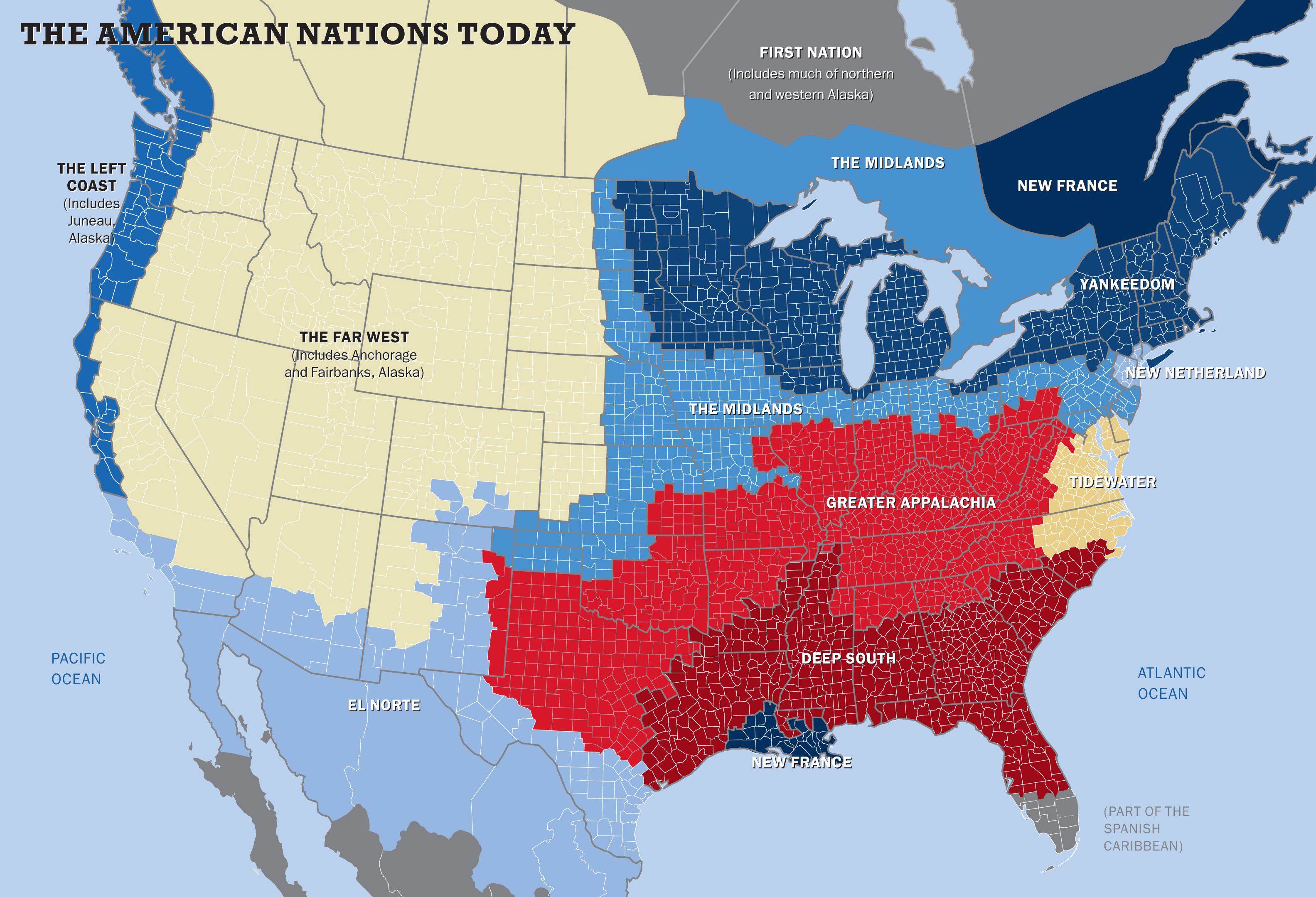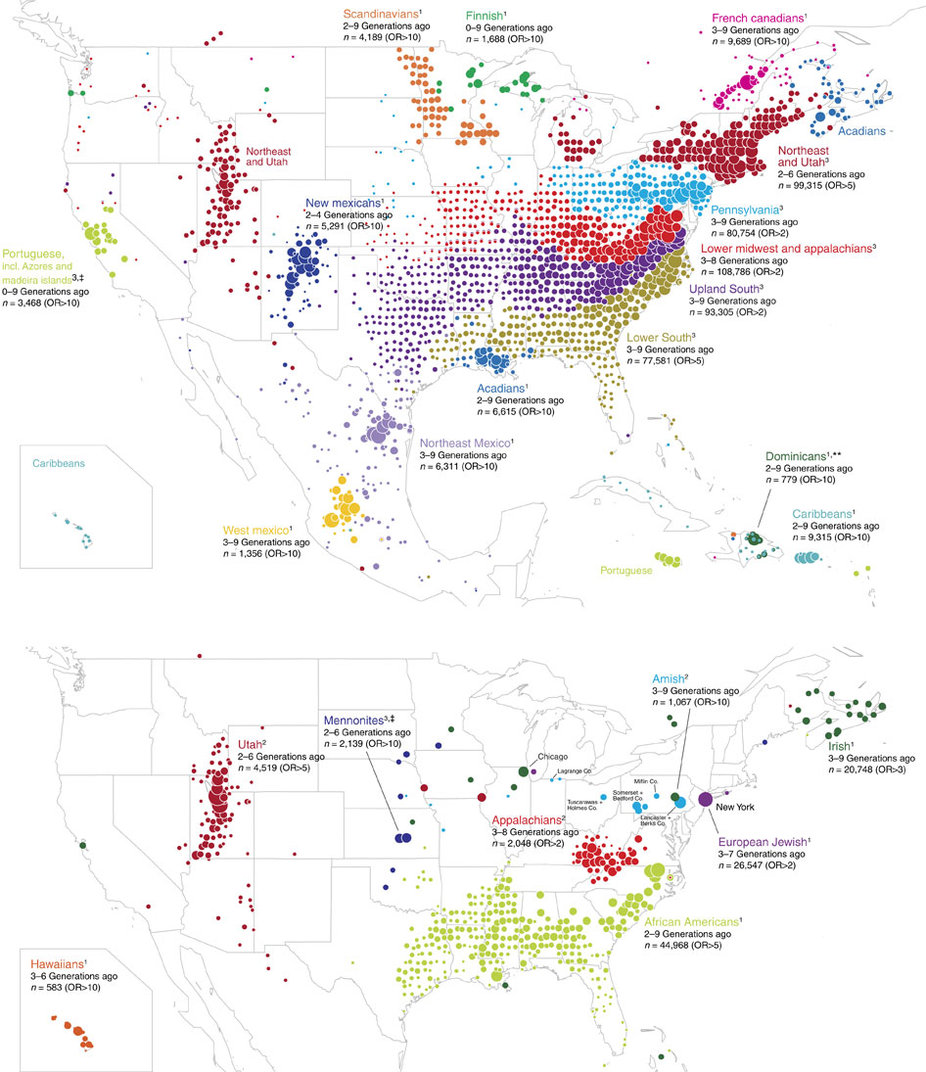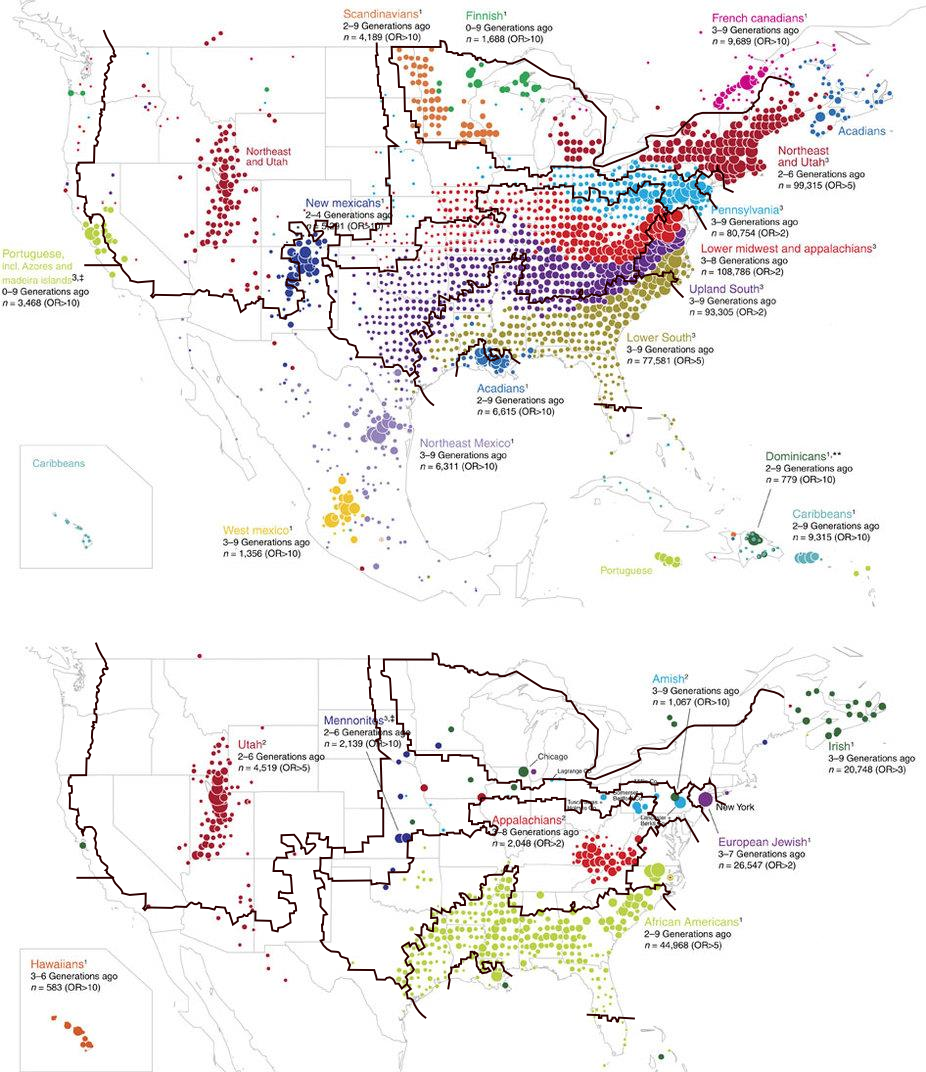Anglo-Saxon is an ethnic identity, based on ancestry like other ethnic identities, but also on linguistics, legal codes, and political beliefs on how to organize society and any other trait that largely fits in the “culture” bag. It is an identity that for many, even in England proper, has remained dormant, even subconscious, but is showing signs of re-emergence politically, if not yet as a conscious identity amongst its bearers. This can be seen with the advent of Brexit and what is being dubbed the “Trump phenomenon” in America. Similar rumblings can be seen in Australia. The Anglo-Saxon diaspora inhabits England, Northern Ireland, the United States, Canada, New Zealand, Australia, South Africa – ever diminishing as they look for greener pastures – and arguably in the “Celtic fringe” of Scotland, Wales, and Ireland, depending on the region. The thrust of this essay is that this identity is real, culturally and genetically, and that for the Anglo-Saxon peoples to survive and thrive in the 21st century it is imperative that their identity as a people re-emerge.
The Anglo-Saxon diaspora is not monolithic. They have been shaped by their respective histories, neighbors, and environments, as well as what kind of Anglo-Saxons from England and subsequent Europeans came to populate them. The chief concern with this essay is the American Anglo-Saxons, who, spanning a continent larger than Europe, differ in many ways as much from each other as they do from their diaspora cousins. The concept of various Anglo-Saxon nations existing within the United States has been thoroughly studied by David Hackett Fischer in Albion’s Seed, and illuminated further by Colin Woodard’s American Nations, both of which have been the focus of prominent and further enlightening bloggers in the field of human biodiversity such as HBD Chick and Jayman. I highly recommend Fischer’s Albion’s Seed, which is great for any lover of American history, especially on a cultural level – discussing what kind of houses our ancestors lived in, how they worshipped God, how they courted, how they raised children, and how they thought government would function best. It suffers a small bias against the Southern and Appalachian nations, but this can be balanced to a degree by reading Born Fighting by James Webb, a book specifically about the “Greater Appalachian” Anglo-Saxon nation, or the Scots-Irish as they are called.
Below are the nations, mapped out geographically where they and their culture predominate.

Rather than these borders dissolving between cultures and populations, the various nations are actually becoming further differentiated with time. This concept is demonstrated in The Big Sort by Bill Bishop. Bishop argues that Americans are segregating themselves into like-minded geographic regions at increasing rates with the onset and ease of long-distance travel. Basically, the various Anglo-Saxon regions are more strongly becoming themselves.
A brief rundown of the four major Anglo-Saxon nations of America, which were founded in colonial times:
The South: This combines the Tidewater and the Deep South. Largely stemming from southwestern regions of England, the Cavaliers were the Loyalists in England’s own Civil War. Many of these nobles and even more (often younger) sons of nobility brought the traditions and plantations from this part of England with them. Similar to Greater Appalachia, the Southern nations are an honor-based and martial culture. Differing from Greater Appalachia, they are more genteel and hierarchical, providing much of the United States’ elite class before the Civil War. They value tradition and authority. When the Crown lost the English Civil War, this triggered another wave of migration of loyalists to the region already populated by their type of Anglo-Saxon, as they seceded with their feet from Cromwell’s new England.
Yankeedom: Descendants of the Puritans, who came from East Anglia, which has long been the most egalitarian region of England and a seedbed of revolt against authority. Even after many of the Puritans had immigrated to America, this region served as a major catalyst and provided much of the manpower for the Parliamentarian side in the English Civil War led by Cromwell. Many American Puritans came back to England to assist in the Civil War. Numerous dominant American values come from this region, as they are the dominant Anglo-Saxon nation in the United States. This is whence we derive our “American exceptionalism” mythos. The Puritans believed they were a chosen people, setting up a city on a hill. They respect education and universalism; hence their most strongly held beliefs need to be shared with and, if need be, forced upon their neighbors. This held true for abolitionism, Wilsonian “make the world safe for Democracy”, America as a country for all nations, and now LGBT rights. This region has produced some of America’s greatest thinkers.
The Midlands: This is Middle America, stretching from Pennsylvania to Iowa. They are largely the outcome of William Penn’s efforts of religious and ethnic tolerance. None too ironically, they hail largely from the safe interior Shire-like Midlands of England, where the Quaker movement was strongest in following the “inner light”. Often they serve as a middle-of-the-road tiebreaker for disputes between the other Anglo-Saxon nations, and what they view as their excesses. They value tolerance, openness. On a personality map of the United States, the Midlands regions is highest in extroversion and conventionality.
Greater Appalachia: The poorest Anglo-Saxon nation, but perhaps the one with the most pride, this nations has its roots in warfare and uncertainty, and actually seems to shine brightest when involved in such events. These settlers came from the borderlands between the kingdoms of England and Scotland, and claimed by both. To survive, they became a law unto themselves and maintained a strong clan-based culture, depending heavily upon kin rather than lords, institutions, or infrastructure. The disdain between this nation and many of the others is mutual, going back to colonial times, as illustrated by Fischer. However, with Yankeedom having been dominant for so long, Greater Appalachia has been pushed into a less antagonistic relationship with the South. This nation values individual liberty and their clan. Another interesting fact that I learned from a recent conversation is that the sediment itself in the mountains of Appalachia matches those that are in Scotland. Divine Providence indeed.
Now, all of these observations and studies have been validated further as a concrete real taxonomy by the burgeoning field of genetics. A recent (2017) study conducted by Han et al. divides the modern United States into genetic clusters of shared ancestry, revealing a map which is incredibly similar to the American nation as delineated by culture. Culture truly is a genetic construct.

Overlaying the borders of the American nations, established by a variety of cultural traits, over these genetic clusters shows a striking resemblance:

A couple of interesting side notes, and hopefully anticipated questions.
Mormons: They are quite literally descendants of Yankeedom. The earliest Mormons were descendants of Puritans following one of the many new revelations or movements that originated in New England during the 19th century. One could argue that revelations and movements keep emanating from the fruitful and imaginative minds of Yankeedom, for better or worse. They picked up many Scandinavians converts en route to Utah, but as many of you may have noticed, many Scandinavians have similar values and migrated to regions dominated by Yankees and their culture like Michigan, Wisconsin, and Minnesota.
The Mormons’ lack of enthusiasm for Trump is a mirror image of Appalachia and the South’s enthusiasm for him as a candidate. Utah as a state dropped immensely in its usual solidarity with Republican candidates, and was responsible for a lion’s share of the support for cuck extraordinaire Evan McMullin. Conversely, in every Anglo-Saxon nation, including the states of Yankeedom, the percentage of people that voted Republican went up with Trump, showing support from many rural Yankees, and perhaps from Yankees less fond of racial and sexual diversity combined with an industrial capitalist economic system. All this is to say that as Mormonism falls ever more prey to the cultural Marxism of their east coast brethren, they will become the Yankeedom of the Far West desert, and a scourge on their neighbors.
Appalachia: Genetically, the nation of Greater Appalachia breaks down into a northern and southern belt. This is interesting, and may just have to do with the genetic isolation experienced by living in such mountainous and hilly terrain – similar to the different genetic clusters seen in Wales despite their common Welsh identity and culture. Culturally and sociologically, the northern and southern belts match on every facet.
Where do non-British or later European immigrants fit in? This is an important question to ask in a country that is almost 25% German, among the many other common European ethnicities such as the Irish, Polish, Italians, and Scandinavians. Largely the same principle at work in The Big Sort, where Americans are moving and settling in like-minded communities…or nations, has been at work since mass immigration began happening in the 1800s. These immigrant groups largely settled where they felt most comfortable, and ultimately, though probably subconsciously, around those they thought would be best for their government and for their children’s marriages.
Massive numbers of Germans settled the Midlands, preferring neither what they viewed as the unruliness of Greater Appalachia, nor the meddlesomeness and utopian ideas of Yankeedom. Many wanted to be small business owners and small farm homesteaders tending to their families and communities. These are similar to the more archaic Amish of today, who also felt most at home and exist in their greatest numbers, in that central band stretching from Pennsylvania to Indiana.
Scandinavians are similar to Puritans, with a dedication to education, a strong egalitarianism, a desire for cohesion and order, and, in our day, a tendency toward utopian ideas and socialism. This can be seen from Sweden to Minnesota, who both can’t help but invite Somalians and various other diversity totems to morally signal for their new religion – in the process wrecking the idealistic utopias they’ve already created. They felt right at home settling in the lands that the descendants of the Puritans had cleared and settled, lands that were similar in environment to their homeland to boot. Fischer hypothesizes that the similarities between Yankeedom and Scandinavia are due to East Anglia’s receiving such a high influx of Angles, along with the Danish influx of later periods during the Viking invasions.
Greater Appalachia and the South, on the other hand, have largely remained their founding stock out of all the founding nations. One element to this may in fact be the rural/urban divide; the South was much more agrarian, and the Appalachians and upland wildernesses took a hardy sort to settle and love. The other element is that immigrating groups did not find those Anglo-Saxon nations as in need of mass immigrant labor, or, in the case of Scandinavians and Germans, as aligned with their culture and folkways. There are always exceptions, of course, as plenty of Germans settled in the New Orleans basin and many Huguenots in Virginia. However, as a rule, nearly everyone I’ve met in the Midwest, where I grew up, had some German ancestry or identified solely as German.
Trump’s election makes all the more apparent that increasing numbers of us don’t see each other as “one nation”, and certainly not “under God”. Reclaiming the Anglo-Saxon nations for Christ and true religion would no doubt help all of them, but Yankeedom leads the charge into a Christless plunge, and the results already are becoming abundantly clear. We can be sure that the flaws of all the other American nations will become all the more prominent as they follow and excise Christ and His law from their collective hearts.
| Tweet |
|
|
|




